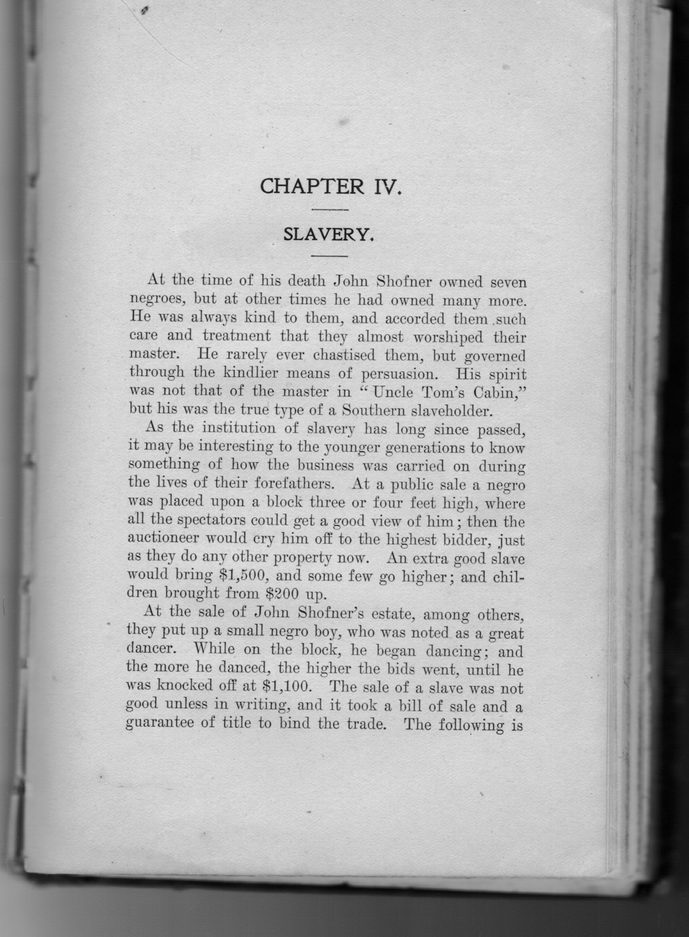This text was obtained via automated optical character recognition.
It has not been edited and may therefore contain several errors.
CHAPTER IV. SLAVERY. At the time of his death John Shofner owned seven negroes, but at other times he had owned many more. He was always kind to them, and accorded them .such care and treatment that they almost worshiped their master. He rarely ever chastised them, but governed through the kindlier means of persuasion. His spirit was not that of the master in ? Uncle Tom?s Cabin,? but his was the true type of a Southern slaveholder. As the institution of slavery lias long since passed, it may be interesting to the younger generations to know something of how the business was carried on during the lives of their forefathers. At a public sale a negro was placed upon a block three or four feet high, where all the spectators could get a good view of him; then the auctioneer would cry him off to the highest bidder, just as they do any other property now. An extra good slave would bring $1,500, and some few go higher; and children brought from $200 up. At the sale of John Shofner?s estate, among others, they put up a small negro boy, who was noted as a great dancer. While on the block, he began dancing; and the more he danced, the higher the bids went, until he was knocked off at $1,100. The sale of a slave was not good unless in writing, and it took a bill of sale and a guarantee of title to bind the trade. The following is

Shofner, John and Descendants 019